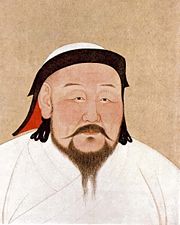

Mongolian
A narrow definition includes the Mongolians proper, which can be roughly divided into eastern and western Mongolians. In a wider sense, the Mongolian peoples includes all people who speak a Mongolianic language, such as the Kalmyks of eastern Europe.
The name "Mongolian" appeared first in 8th century records of the Chinese Tang dynasty, but then only resurfaced in the 11th century during the rule of the Khitan. At first it was applied to some small and still insignificant tribes in the area of the Onon River. In the 13th century, it grew into an umbrella term for a large group of Mongolianic and Turkic tribes united under the rule of Genghis Khan.
The specific origin of the Mongolianic languages and associated tribes is unclear. Some researchers have proposed a link to languages like Tungusic and Turkic, which are often included alongside Mongolianic in a hypothetical group called Altaic languages, but evidence for this line of argumentation is rather weak.
The Chinese census of 2000 counted 5.8 million Mongolians (according to the narrow definition above). Most of them live in the Inner Mongoliania autonomous region, followed by Liaoning province. Small numbers can also be found in provinces near those two.
Other peoples speaking Mongolianic languages are the Daur, Monguor, Dongxiang, Bonan, and parts of the Yugur. Those do not officially count as part of the Mongolian nationality, but are recognized as nationalities of their own.

Contact Me:Dapeng li